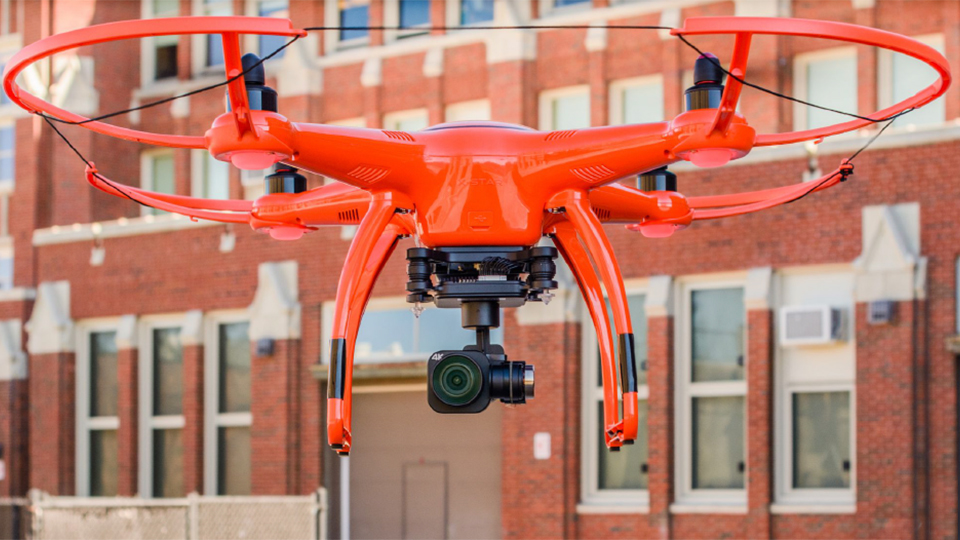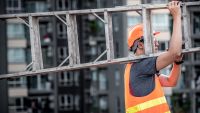Common Myths About Active Fall Protection
Stay fall free
By John Kemp
Throughout my 22 years in the fall protection industry, I have enjoyed training various trades across the United States on the proper inspection, use and maintenance of personal fall arrest systems (PFAS) — specifically, those that involve equipment such as full-body harnesses, connecting devices and anchor points. The use of these items is classified as “active,” as they require worker training and manipulation for proper and safe usage. Active systems should be used only when other options have been deemed infeasible, such as relocating the work to a safe level, thus eliminating the fall hazard, or the use of passive fall protection systems (guardrails, for example).
What has amazed me the most is the number of common falsehoods, myths and misconceptions that are out there related to an active fall event, one where a worker experiences an unintended loss of balance and then must rely on his active fall arrest system to bring him to a controlled, predictable stop and also rely on his company’s rescue plan to get him down quickly.
Let’s go through some of these myths and misconceptions.
Wearing Fall Protection Is Sufficient
Unfortunately, there are countless post-fall-related news articles that reference a serious or fatal injury, even though the worker was wearing his full-body harness. Inevitably, many of these articles usually get around to stating, “The worker was not hooked up at the time the catastrophic loss of balance occurred.” This usually means the worker had to unhook his PFAS in order to move vertically or horizontally to complete the assigned task.Wearing and using the equipment properly are two different things. Anytime you disconnect your lifeline to move vertically or horizontally, you are at risk of a serious, if not fatal, injury. If it is not 100 percent, it’s not fall protection. That should be the standard.
Workers Are Always Conscious Before a Fall Event Occurs
In just about every training I conduct on fall protection, one attendee will say, “Well, when I fall, I’ll do this or I’ll grab that.” I have to stop them right then and there to remind them that they can never assume they are conscious just before they lose their balance. Perhaps high blood pressure or another medical issue rendered them unconscious and triggered their fall. That is how everyone must think and what they must plan for — worst-case scenarios.A Conscious Worker Can React Quickly Enough During a Fall Event to Eliminate or Minimize Injury
The anatomy of a fall event is such that a worker will fall about 20 feet before his brain can get his body to react. At such a speed, even a conscious and uninjured worker will find it physically impossible to grab anything that may be in reach to (hopefully) stop the fall. That is why manufacturers and employers must partner together to provide at-risk workers with fall protection equipment that is as automatic as possible. A worker should never have to rely on his/her physical reflexes as part of the fall protection plan to stop a fall.Workers Need to Be at Least 20 Feet High to Be Seriously or Fatally Injured in a Fall Event
Data from the U.S. Bureau of Labor and Statistics has shown that approximately 57 percent of fall fatalities, where the fall height was known, were from a height of 20 feet or less. Astonishingly, approximately 10 percent were from a height of only 6 feet or less. This is an important statistic to share with those being trained in fall arrest systems. Why? Because workers have stated to me over the years that, even though they have the right fall arrest equipment onsite and they were trained on the equipment, they often do not use it because they feel the height at which they are working does not warrant it. The next time you train, ask this question: “If you were 15 feet up on a flat roof of a building that is 20 feet wide, would you use your fall protection?” The resounding answer will be no. Now, ask the same question but change just one factor: the height is now 1,000 feet in the air. This time, all answers will be yes. It’s amazing how perception influences the use of fall protection, when fall protection should be used at all times.Workers Can Last an Hour or More Suspended in a Full-Body Harness Waiting for Rescue
The average person suspended in a full-body harness after a fall arrest event would say, when asked, that they could last at least an hour or two waiting for rescue. Numerous tests have proven that the average person can last only about 15 minutes suspended in a full-body harness before possibly experiencing medical issues related to suspension trauma. Rescue must be without delay.For companies that adopt the ANSI Fall Protection Standards, a written rescue plan must be in place for every known location where active fall protection is being used. I have yet to see a fall protection plan written to include a rescue plan for every area where active fall protection is being used. There is a great deal of work ahead.
Employees Work in Tandem at Elevation
“Does everyone who needs to use active fall protection equipment while working at elevation do so in tandem?” I usually get a chuckle when I ask this question during training. My point here is: how do you know someone fell and is in need of rescue if they are working alone? This is certainly something for all companies to consider.Online Training Is Sufficient for Workers Exposed to Fall Hazards
I am a strong proponent that most online fall protection courses provide only instruction, not training. They lack the hands-on, show-and-tell component of fall protection training, which is paramount for workers to fully grasp the dos, don’ts and limitations of the equipment, systems and rescue plans that they might one day need to rely on to save their life in the event they ever experience a loss of balance at elevation.Stay fall-free!
Originally published in Masonry magazine.
About the Author
John Kemp is director of technical services for Malta Dynamics. He can be reached at jkemp@maltadynamics.com.
















